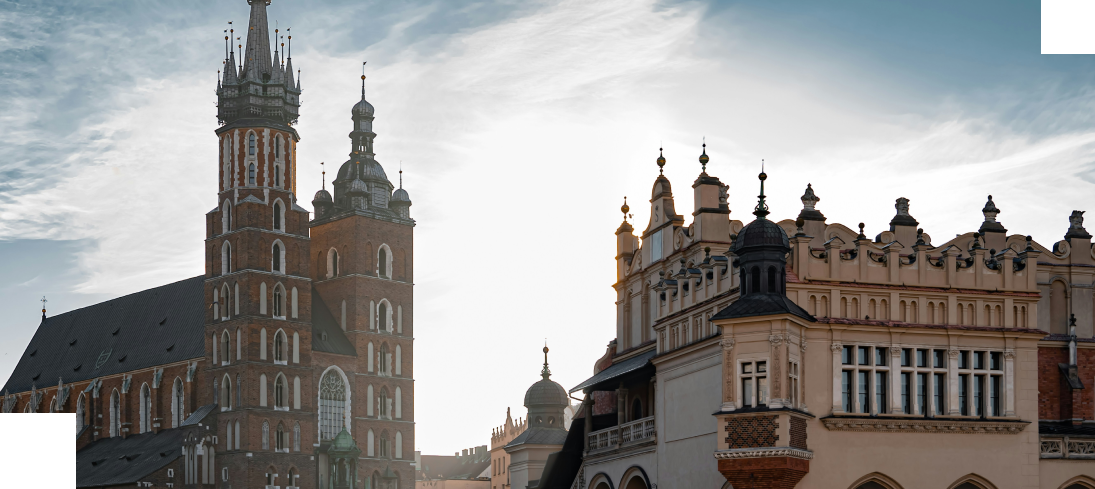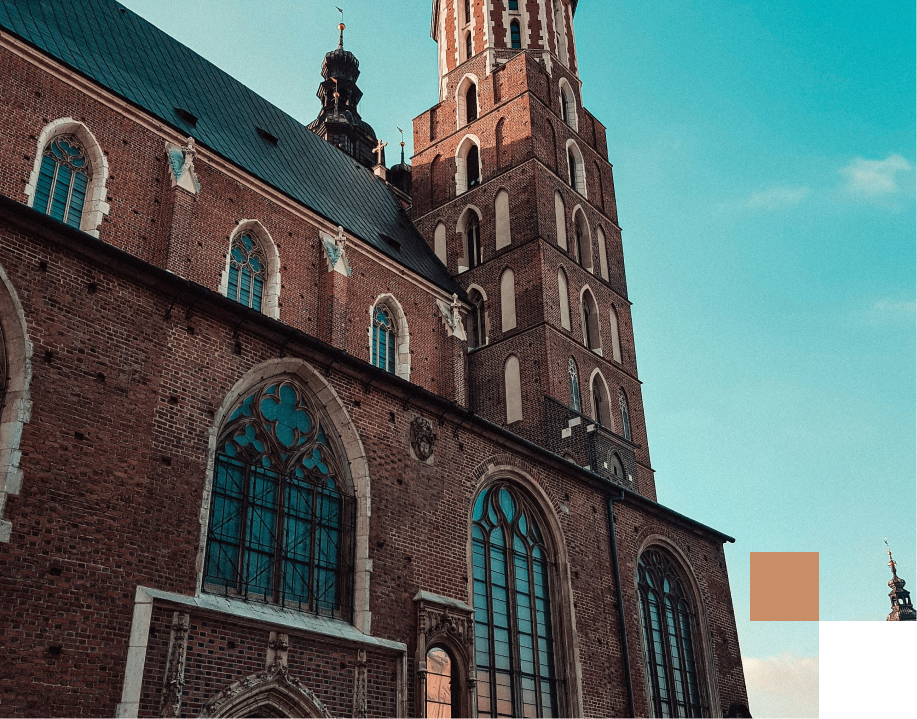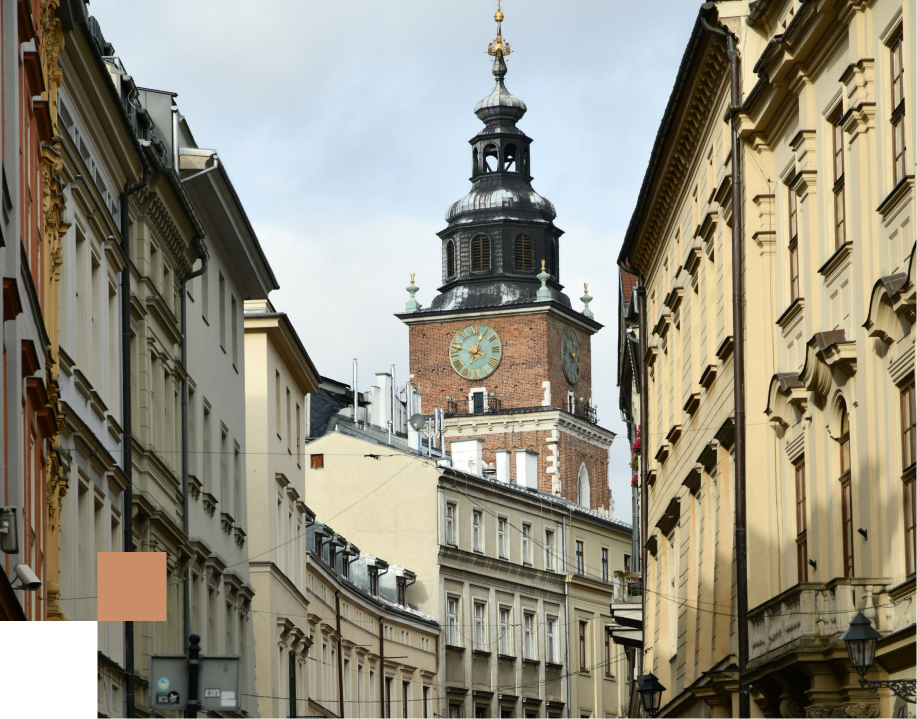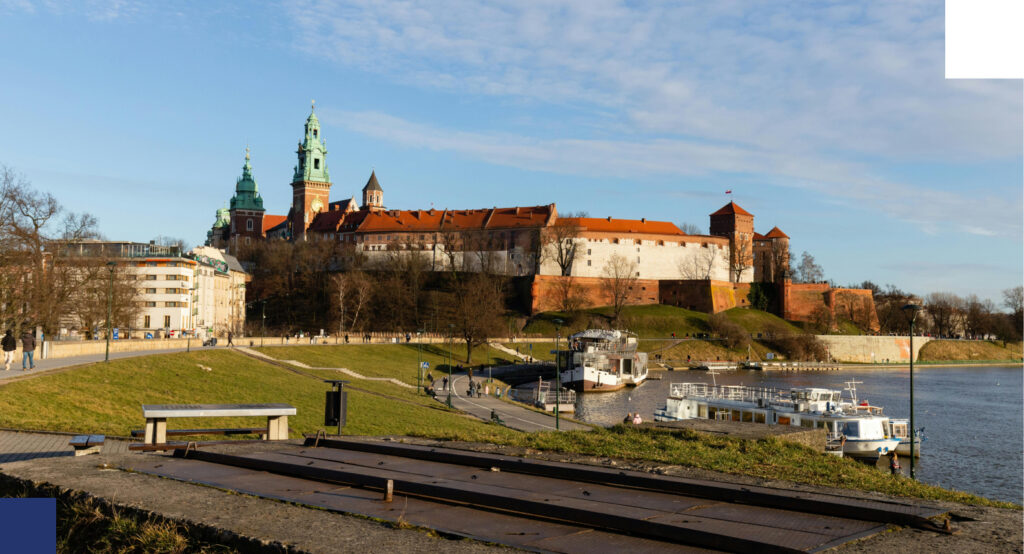Krakow Host City
Kraków is a prominent city and the capital of the Małopolskie province in southern Poland, situated along the upper Vistula River.
Renowned for its impressive historical architecture and cultural significance, it stands as one of Poland’s largest cities. The UNESCO-recognized World Heritage site, its old town area, showcases grand historic structures. The Main Square, known as Rynek Główny, dates back to the 13th century, and the present-day landscape incorporates a modern design on the grounds of former fortifications.


History
Kraków, originally home to the Wiślanie tribe, became a significant city under Prince Mieszko I in the 10th century.
Bolesław I later made it the seat of a Polish bishopric, leading to rapid expansion and the acquisition of Magdeburg rights in 1257. Kraków thrived as a trade center and a major principality’s capital from 1138.
In 1320, King Władysław I established Kraków as the capital, where Polish kings were crowned and entombed. The city flourished in the 14th century as a political, economic, and cultural hub, boasting the prestigious Jagiellonian University founded in 1364.
By 1600, Kraków’s decline began, exacerbated by the end of the Jagiellon dynasty and the capital’s move to Warsaw in 1611. The 17th-century Swedish wars left the city economically strained. Between 1795 and 1918, Kraków was under Austrian control, except for brief periods.


After returning to Poland in 1918, Kraków fell to the Germans in World War II.
The city suffered under German occupation, with the execution of the university’s staff and the deportation of thousands of Jews to Auschwitz II. Liberated in 1945 by Soviet forces, Kraków experienced less damage than other cities.
Post-war, Kraków’s industry was rebuilt under Soviet-backed Polish government, leading to the transformation from a university city to an industrial center. The Nowa Huta steelworks marked this shift. Despite economic challenges, Kraków’s heavy industry helped the city endure post-communist economic turbulence. However, industrial activities have contributed to severe pollution, threatening public health and architectural treasures.
The contemporary city
Kraków boasts numerous historic buildings, including St. Mary’s Church, with a main section dating back to 1497, featuring a stained-glass window from 1370 and an impressive altar (1477–89) by Veit Stoss. Wawel Cathedral, originally from the 11th century, underwent rebuilding and renovation in subsequent centuries, displaying ornate chapels and burial chambers.
Medieval defensive structures, the Barbican and Florian Gate, stand as reminders of Kraków’s historical struggles. The Jewish quarter, Kazimierz, houses Remu’h Cemetery with well-preserved tombstones from the 16th century. The Renaissance Cloth Hall is another architectural gem.
In addition to its rich history, Kraków remains a cultural center with institutions like the National Museum, Jagiellonian University Museum in Collegium Maius, and the Czartoryski Museum.

The Wieliczka salt mine, operational for over 700 years, now serves as a museum, sanatorium, and chapel-filled underground complex,
designated a UNESCO World Heritage site in 1978. The nearby 16th-century park at Kalwaria Zebrzydowska is also on the World Heritage list.